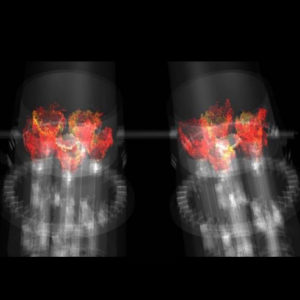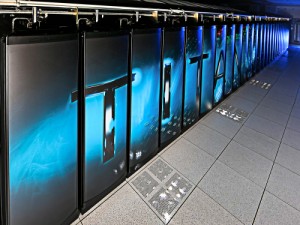
Hyperion Research has published a new case study on how General Electric engineers were able to nearly double the efficiency of gas turbines with the help of supercomputing simulation
HPC plays a critical role because its computational horsepower can solve the equations used to represent key physical behaviors. Also, the large memory capacity of an HPC system is needed to store the models of the geometries and boundary conditions of the physical systems. It is also essential to create the visualization of the simulation results used by GE engineers to better understand what is happening inside the gas turbine generators.
Understanding physical behaviors in harsh environments is extremely hard, and at times, critically important. That is the situation General Electric (GE) engineers faced when designing their new heavy-duty gas turbine generator. Gaining even 1% greater efficiency could save their electric utility customers millions of dollars and improve GE’s world-wide competitiveness. The key issues involved a better understanding of the fluid dynamics and reactive flow behaviors in the turbine’s 1,500 degree Celsius combustion chambers and the interactions between the 2 to 16 individual flames in the chambers. GE Power engineers had reached the limits of theory and experiments, motivating them to apply advanced modeling and simulation.
When the engineers at the GE Power division realized that their traditional approaches to designing heavy-duty gas turbine generators were insufficient, they turned to the GE Global Research
computational combustion lab. In turn, the combustion lab approached Oak Ridge National Laboratory (ORNL) and Cascade Technologies. By using the Titan supercomputer at the ORNL Computational Leadership Facility (OLCF), researchers adapted and applied the CHARLES code to understanding the complex physics found inside a gas turbine. This involved creating a nearly billion cell mesh to run simulations on 8,000 to 16,000 Titan processor cores.
With these advanced modeling and simulation capabilities, GE was able to replicate previously observed combustion instabilities. Following that validation, GE Power engineers then used the tools to design improvements in the latest generation of heavy-duty gas turbine generators to be delivered to utilities in 2017. These turbine generators, when combined with a steam cycle, provided the ability to convert an amazing 64% of the energy value of the fuel into electricity, far superior to the traditional 33% to 44%.
GE’s example provides great lessons about what it takes to develop HPC-enabled modeling and simulation capabilities to create improved science-based understanding of physical behaviors in inaccessible environments. It also demonstrates the importance of “use inspired” research to accelerate the development and deployment of improvements in modeling and simulation capabilities.

Titan Supercomputer
What’s that noise? For the engineers at General Electric Power, finding answers to that question is vitally important. In a natural gas turbine generator, noise can be an indication of instabilities that can cause significant damage to the turbine. Also, noise may indicate inefficiencies in the combustion of the fuel which can lead to increasing emissions from the turbine. The challenge of understanding the source of noise in a gas turbine is that the combustors, the possible source of noise, operate in an extremely harsh environment; the temperatures in the combustion chamber in a gas turbine can exceed 1,500 degrees Celsius. This, and other experimental restrictions, limit the ability of engineers to see directly into operating gas turbines.
This use case is a story about how GE Power engineers were challenged with finding new ways to obtain science-based insight into complex physical behaviors in an environment that was beyond the scope of theory and experiments. GE turned to Cascade Technologies of Palo Alto, CA and Oak Ridge National Laboratory (ORNL) and the capabilities of their Titan Cray XK7 supercomputer. This is also a story about how investments made by the DOE years ago in the Stanford University’s turbulent mixing simulation center resulted in a commercial applications code offered by Cascade Technologies that provided the critical capability that made obtaining that insight possible.
----------------------------------------
source: insidehpc.com















